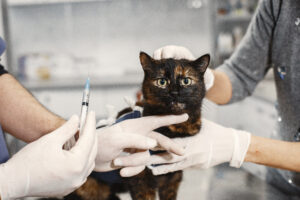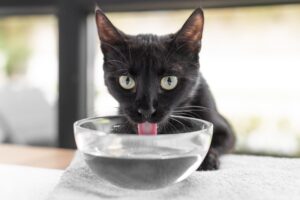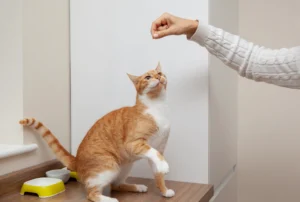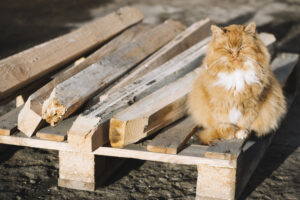Introduction
The long-haired tortie cat is one of nature’s most striking feline creations. With their multi-colored coats featuring patches of orange, black, and sometimes cream, these cats are not only visually stunning but also full of personality. While many cat lovers are drawn to the long-haired tortoiseshell cat for their beauty and distinctive appearance, owning one comes with unique challenges that even experienced cat parents might not anticipate.
If you’re considering bringing a long-haired tortie cat into your home or already share your life with one of these magnificent creatures, understanding their specific needs and potential problems is essential for providing the best care possible. In this comprehensive guide, we’ll explore five surprising problems that long-haired tortie cat owners frequently encounter and provide practical solutions to ensure your tortoiseshell companion lives a healthy, happy life.
The long-haired tortie cat combines the complex coat genetics of tortoiseshell patterns with the maintenance demands of long fur, creating a pet that’s as challenging as it is rewarding. Let’s dive into the unique world of these beautiful felines and uncover what makes them special—and sometimes particularly demanding—companions.
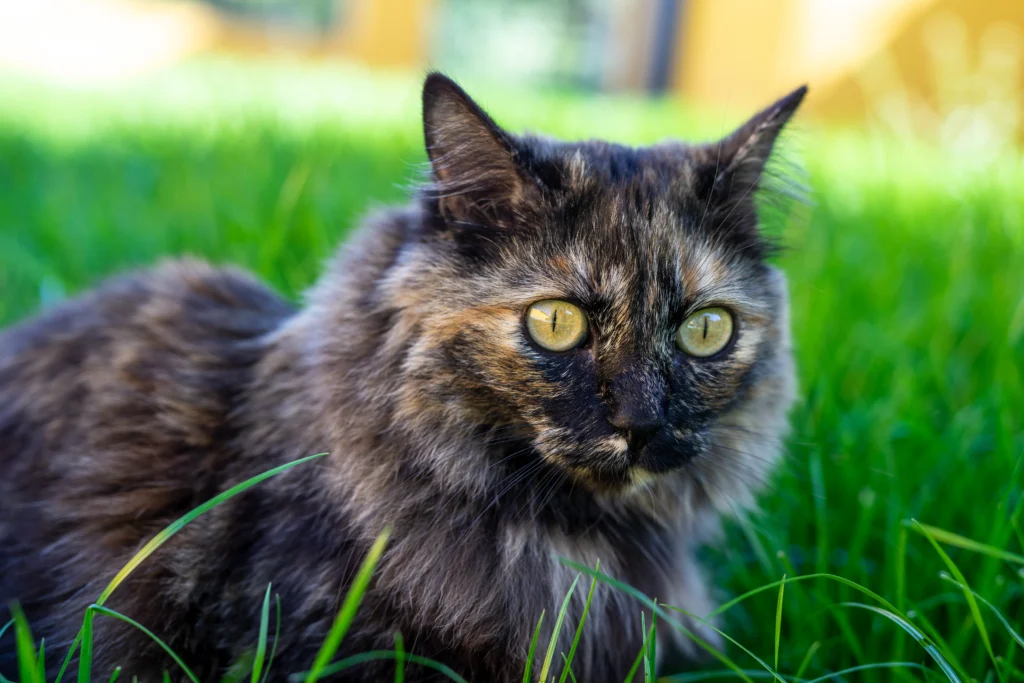
What Makes a Long-Haired Tortie Cat Special?
Before discussing the challenges, it’s important to understand what exactly a long-haired tortie cat is. A tortoiseshell, or “tortie,” is not a specific breed but rather a coat pattern characterized by a mix of orange and black fur (or variations including cream, chocolate, and cinnamon). This pattern results from X chromosome-linked color genes, which is why nearly all tortoiseshell cats are female.
The long-haired tortie cat combines this distinctive coloration with a luxurious, flowing coat that requires regular maintenance. These cats can be found in various breeds, including:
- Maine Coon
- Persian
- Norwegian Forest Cat
- Ragdoll
- Siberian
- British Longhair
- Turkish Angora
Each of these long-haired tortoiseshell cat breeds brings its own characteristics to the tortie pattern, but they all share the beautiful, multi-colored coat that makes torties so beloved.
Now, let’s explore the five most surprising problems you might encounter with your long-haired tortie cat.
Problem 1: The “Tortitude” Is More Than Just a Myth
Among cat enthusiasts, there’s a well-known concept called “tortitude” – the allegedly strong-willed, sassy personality often attributed to tortoiseshell cats. While some might dismiss this as mere folklore, research and extensive anecdotal evidence suggest there may be truth to this reputation, especially when it comes to the long-haired tortie cat personality.
Why Long-Haired Torties Have Strong Personalities
The long-haired tortie cat temperament is often characterized by:
- Strong independence: These cats typically know what they want and aren’t afraid to demand it
- Vocalization: Many long-haired tortie cats are quite talkative and expressive
- Territorial behavior: They often establish clear boundaries and preferences within the home
- Selective affection: Unlike some cats that are universally friendly, torties often choose their favorite humans carefully
Dr. Elizabeth Stelow, chief of the animal behavior service at the University of California, Davis, conducted research suggesting that cats with certain coat patterns, including tortoiseshell, may indeed display more assertive behaviors than others. This isn’t necessarily negative – many tortie owners cherish their cat’s strong personality and find it adds character to their relationship.
Managing Your Long-Haired Tortie’s Strong Personality
To navigate your long-haired tortie cat behavior effectively:
- Establish consistent routines: Torties appreciate predictability
- Provide ample enrichment: Mental stimulation helps channel their energy constructively
- Respect their space: Recognize when your cat needs alone time
- Use positive reinforcement: Reward good behavior rather than punishing unwanted actions
A long-haired tortie cat’s strong personality often means they’re not ideal first-time cats for inexperienced owners. However, those who appreciate a cat with character often find the long-haired tortie cat’s distinctive temperament deeply rewarding.
As one tortie owner shared on PetsPump: “My long-haired tortie, Cleo, definitely runs the household. She has opinions about everything from when dinner should be served to who’s allowed to sit in her favorite chair. But that sass comes with incredible loyalty and affection when you’ve earned her trust.”
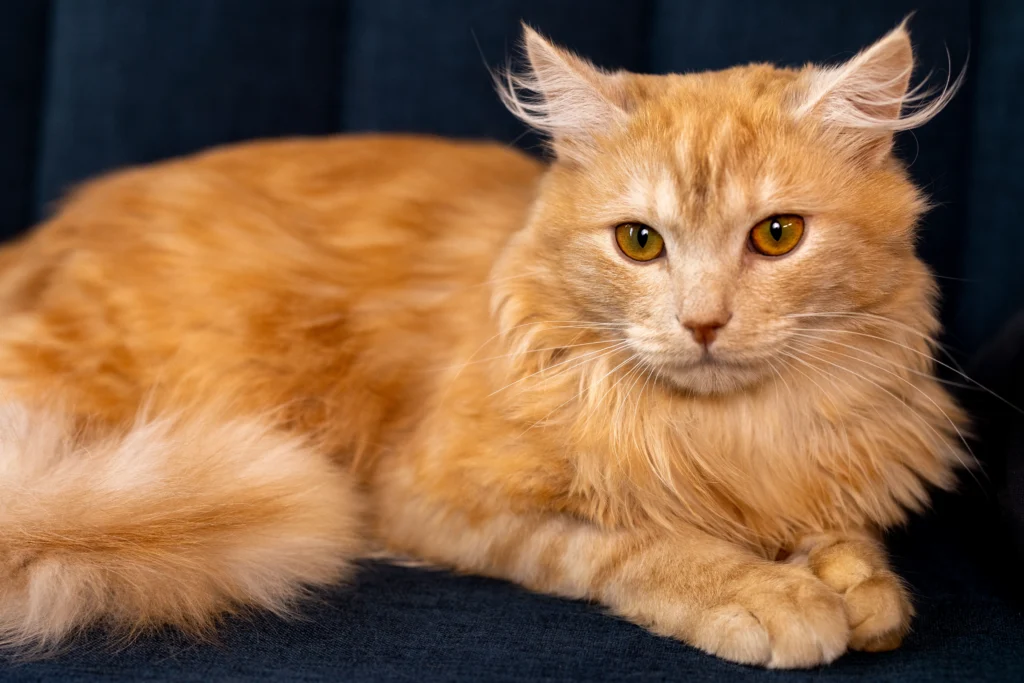
Problem 2: Extensive Grooming Requirements Beyond What You Might Expect
Perhaps the most obvious yet still surprising challenge of owning a long-haired tortie cat is the extensive grooming needs these beautiful felines require. Their luxurious coats demand far more attention than many new owners anticipate, making long-haired tortie cat care particularly time-intensive.
The Triple Threat of Tortie Coat Maintenance
The long-haired tortie cat grooming challenge comes from three distinct factors:
- Length complexity: The long fur itself tangles easily and collects debris
- Texture variations: Different colored sections of fur often have different textures, making consistent grooming challenging
- Seasonal changes: Long-haired torties typically undergo intense seasonal shedding, with long-haired tortie cat shedding particularly pronounced during spring and fall
During peak shedding seasons, long-haired tortie cat maintenance can easily become a daily task rather than a weekly one. Without proper attention, these cats can develop painful mats that may require professional intervention to remove.
Essential Grooming Tools and Techniques
For effective long-haired tortie cat grooming, you’ll need:
- Slicker brush: Ideal for removing loose fur and preventing tangles
- Metal comb: Perfect for detecting and gently working through small knots
- De-shedding tool: Helps manage seasonal shedding (use sparingly to avoid skin irritation)
- Mat splitter: For safely addressing any mats that do develop
Establish a regular grooming schedule, ideally brushing your long-haired tortie cat at least 3-4 times weekly for 15-20 minutes each session. During heavy shedding periods, daily brushing may be necessary.
Veterinary dermatologist Dr. Karen Campbell recommends: “Start grooming sessions when your tortie is relaxed, perhaps after playtime when they’re tired. Keep sessions positive with treats and praise, and stop before your cat becomes irritated. Consistency is key to managing a long-haired cat’s coat.”
The investment in proper long-haired tortie cat grooming tools and techniques pays dividends in reducing hairballs, preventing skin issues, and maintaining the stunning beauty of your cat’s coat. Plus, regular grooming sessions provide valuable bonding time with your feline companion.
Problem 3: Unique Health Concerns That Affect Long-Haired Torties
While all cats face certain health risks, the long-haired tortie cat has some specific health considerations that might surprise new owners. Understanding these long-haired tortie cat health issues can help you provide proactive care and potentially extend your pet’s long-haired tortie cat lifespan.
Genetic Predispositions Worth Noting
Due to the genetics that create tortoiseshell coloration, these cats may face some unique health challenges:
- Chimeric tendencies: Some torties are chimeras (containing two different cell populations), which can occasionally lead to asymmetric health issues
- X-chromosome linked conditions: Since tortie coloration is X-chromosome linked, certain genetic conditions on this chromosome may be more common
Additionally, depending on the specific breed of your long-haired tortoiseshell cat, they may inherit breed-specific health concerns. For example, Persian torties may have breathing issues due to their facial structure, while Maine Coon torties might be more prone to hip dysplasia.
Skin and Coat Health Concerns
The long-haired tortie cat’s extensive coat creates specific vulnerabilities:
- Skin infections: Moisture can become trapped under dense fur, creating ideal conditions for fungal or bacterial growth
- Parasites: Fleas, ticks, and other parasites can hide effectively in long fur
- Overheating: Heavy coats make torties more susceptible to heat stress during warm weather
Regular veterinary checkups are particularly important for long-haired tortie cats. Dr. Jennifer Coates, DVM, advises: “Long-haired cats should have thorough skin examinations during every veterinary visit. Their dense fur can hide developing skin issues until they become serious problems.”
Maintaining Optimal Health
To support your long-haired tortie cat’s health:
- Schedule regular veterinary exams: Aim for twice-yearly wellness checks
- Monitor weight carefully: Long fur can mask weight changes
- Stay current on parasite prevention: Choose products specifically formulated for long-haired cats
- Consider periodic professional grooming: Some areas, like the sanitary region, may need professional attention
With proper care, the long-haired tortie cat lifespan typically ranges from 12-16 years, though many well-cared-for indoor torties live well into their late teens or even early twenties. Regular monitoring for health issues, combined with proper nutrition and care, gives your tortie the best chance at a long, healthy life.
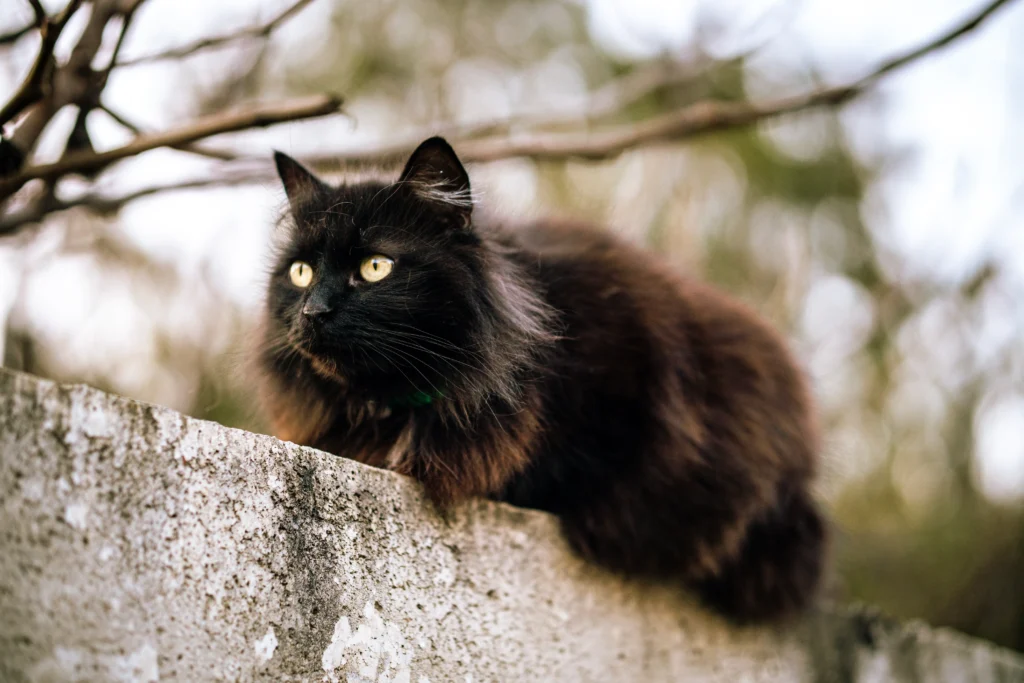
Problem 4: Dietary and Digestive Challenges Specific to Long-Haired Torties
The unique physiology and grooming habits of long-haired tortie cats create specific dietary and digestive challenges that many owners don’t anticipate. Understanding the intricacies of long-haired tortie cat diet requirements can help prevent uncomfortable and potentially serious digestive issues.
Hairball Complications: A Major Concern
Perhaps the most significant digestive challenge for any long-haired cat is hairball formation, but this issue is particularly pronounced in long-haired tortie cats for several reasons:
- Increased self-grooming: Many torties are fastidious groomers, ingesting more hair than average
- Multiple fur textures: The varied texture of tortoiseshell fur can create more complex hairballs that are harder to pass
- Seasonal shedding intensity: During heavy shedding periods, hairball formation can dramatically increase
Veterinary research indicates that severe hairballs can occasionally lead to intestinal blockages requiring surgical intervention. This makes proactive hairball prevention a critical aspect of long-haired tortie cat care.
Nutritional Needs for Coat Health
The magnificent coat of a long-haired tortie cat requires significant nutritional support:
- Higher protein requirements: To maintain healthy fur growth and replacement
- Essential fatty acids: Particularly omega-3 and omega-6 for coat luster and skin health
- Biotin and other B vitamins: Support healthy keratin production for fur
Dr. Lisa Pierson, a veterinary nutritionist, explains: “Long-haired cats often benefit from diets slightly higher in protein and healthy fats than their short-haired counterparts. The continuous growth and replacement of their extensive coat creates additional nutritional demands.”
Dietary Management Strategies
To support your long-haired tortie cat’s digestive health:
- Select hairball-formula foods: These typically contain additional fiber to help move hair through the digestive tract
- Consider a diet with added omega fatty acids: Look for foods supplemented with fish oil or other omega sources
- Ensure adequate hydration: Encourage water consumption to support digestive function
- Implement regular small meals: More frequent, smaller feedings may reduce digestive stress
- Add occasional digestive enzyme supplements: Speak with your veterinarian about appropriate options
Many long-haired tortie cat owners find success with combination approaches, such as feeding a high-quality hairball formula food supplemented with small amounts of pureed pumpkin (for additional fiber) or a quarter teaspoon of fish oil (for coat health) a few times weekly.
Regular monitoring of your long-haired tortie cat’s digestive health—including stool consistency, hairball frequency, and appetite—can help you adjust their diet to optimize their specific needs.
Problem 5: Environmental Adaptations Required for Long-Haired Tortie Comfort
The final surprising challenge many long-haired tortie cat owners encounter involves the environmental modifications needed to accommodate these luxuriously-coated felines. From temperature management to furniture considerations, creating an ideal living space for a long-haired tortie cat requires thoughtful planning.
Temperature Sensitivity: A Year-Round Concern
While their magnificent coats provide excellent insulation in cold weather, long-haired tortie cats often struggle with temperature regulation, particularly:
- Heat sensitivity: Long-haired torties typically show signs of discomfort at temperatures that short-haired cats tolerate easily
- Seasonal adaptation lags: Their heavy coats don’t shed quickly enough to adjust to rapid temperature changes
- Cooling difficulty: Once overheated, long-haired cats take longer to cool down
Dr. Michael Lappin, professor of veterinary internal medicine, notes: “Long-haired cats are particularly vulnerable to heat stress. Owners should provide cooling options year-round, even in climates with mild summers.”
Creating a Long-Haired Tortie-Friendly Home
To ensure your long-haired tortie cat’s comfort and safety:
- Provide elevated resting spots: Ceiling fans and higher perches can offer cooling air circulation
- Create cool retreats: Ceramic tile floors or cooling mats give relief during warm weather
- Consider strategic grooming: Some owners opt for “lion cuts” in summer months (though this should be discussed with your veterinarian)
- Manage humidity: Both extremely dry and overly humid environments can affect coat health
- Install pet-friendly air purifiers: Long-haired cats contribute significantly to dander in the home
Additionally, furniture and household fabric choices become more important with a long-haired tortie cat. Tightly woven fabrics tend to collect less hair than looser weaves, and leather or pleather furniture may be easier to maintain.
Exercise and Enrichment Considerations
The long-haired tortie cat exercise needs may differ from short-haired cats in several ways:
- More frequent but shorter play sessions: To prevent overheating during active play
- Indoor enrichment focus: Creating stimulating indoor environments helps long-haired torties who may be less comfortable outdoors in warm climates
- Grooming-friendly play options: Toys that don’t create static or easily tangle in long fur
Tailoring your home environment to accommodate your long-haired tortie cat’s needs not only increases their comfort but also supports healthy behavior and reduces the likelihood of temperature-related stress.
Adopting a Long-Haired Tortie Cat: What to Know Before You Commit
If you’re considering long-haired tortie cat adoption, understanding the commitment involved helps ensure a successful match. These distinctive cats offer tremendous rewards but require specific considerations beyond what many potential owners anticipate.
Assessing Your Readiness for a Long-Haired Tortie
Before pursuing long-haired tortie cat adoption, honestly evaluate:
- Time availability: Can you commit to regular grooming sessions and play time?
- Financial resources: Long-haired cats often incur higher grooming and potentially veterinary costs
- Home environment: Is your living space suitable for a cat with temperature sensitivity?
- Experience level: The unique temperament and care needs may challenge first-time cat owners
Long-haired tortie cat suitability as pets varies based on owner lifestyle and expectations. These cats typically thrive with experienced owners who appreciate their distinctive personalities and can accommodate their needs.
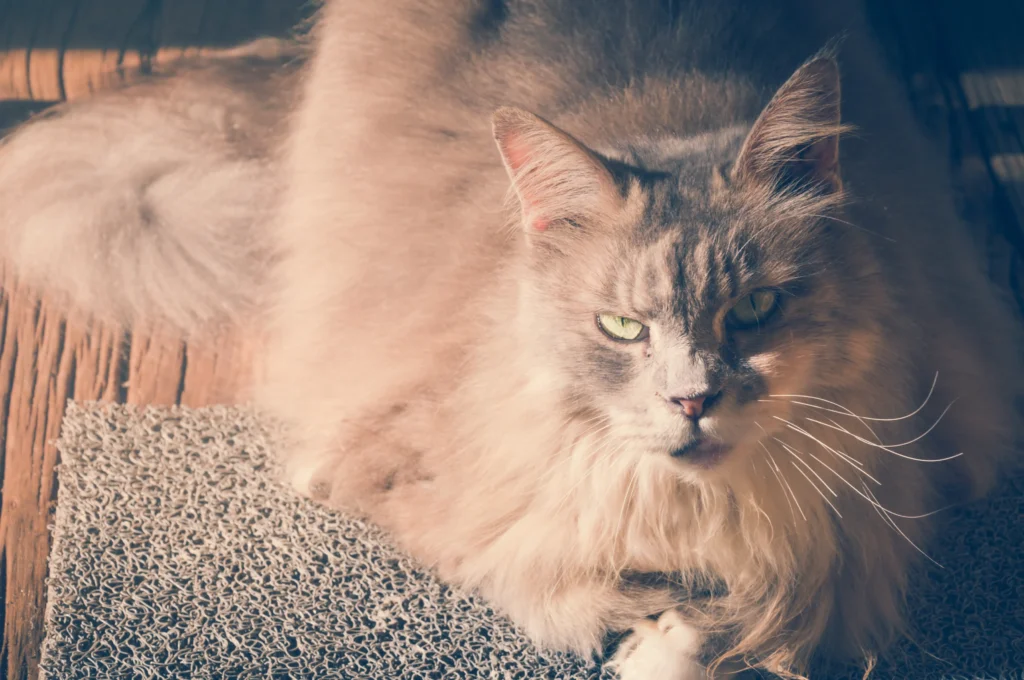
Where to Find Long-Haired Tortie Cats
When seeking a long-haired tortie cat, consider:
- Shelter adoption: Many rescues have long-haired torties awaiting homes
- Breed-specific rescues: If you’re interested in a particular long-haired tortoiseshell cat breed
- Reputable breeders: For specific breed characteristics, though the tortoiseshell pattern cannot be specifically bred for
The long-haired tortie cat price varies widely depending on source and breed. Shelter adoption fees typically range from $50-$200, while purebred long-haired cats with tortoiseshell patterns from reputable breeders might range from $800-$2,000+ depending on the breed.
Preparing for Your New Long-Haired Tortie
Once you’ve decided to welcome a long-haired tortie cat into your home, preparation is key:
- Gather appropriate grooming tools: Start with essential brushes and combs
- Create comfortable resting spots: Include options at different heights and temperatures
- Select appropriate scratching surfaces: Long-haired cats have specific nail maintenance needs
- Find a veterinarian experienced with long-haired cats: Preventive care is especially important
Dr. Sarah Wooten, DVM, advises: “Before bringing home any long-haired cat, have a discussion with your veterinarian about preventive care specific to long-haired breeds. From parasite control to dental care, these cats have unique health maintenance needs.”
Living Harmoniously With Your Long-Haired Tortie Cat
Despite the challenges, most long-haired tortie cat owners will enthusiastically tell you that the joy these colorful companions bring far outweighs the extra care they require. Understanding their unique needs is the first step toward building a rewarding relationship with these magnificent felines.
The Rewards of Long-Haired Tortie Companionship
Long-haired tortie cat characteristics that make them wonderful companions include:
- Striking appearance: No two tortoiseshell patterns are exactly alike
- Engaging personalities: Their “tortitude” creates dynamic, interactive relationships
- Loyalty: Many torties form deep bonds with their chosen people
- Intelligence: These cats often show remarkable problem-solving abilities
- Conversation: Most long-haired torties are communicative and expressive
With proper socialization, long-haired tortie cat training can enhance these natural tendencies, creating a well-adjusted feline companion who navigates home life with confidence.
Long-Term Success With Your Tortie
For lasting harmony with your long-haired tortie cat:
- Establish consistent routines: Predictable feeding, play, and grooming schedules
- Invest in long-haired tortie cat socialization: Early and ongoing positive experiences with various people and situations
- Create environmental enrichment: Rotating toys, puzzle feeders, and observation opportunities
- Develop grooming rituals: Turn necessary maintenance into bonding opportunities
- Monitor health proactively: Learn your cat’s normal patterns to catch changes early
The effort invested in understanding and meeting your long-haired tortie cat’s unique needs pays tremendous dividends in the form of a harmonious human-feline relationship that can last up to two decades.
Conclusion
The long-haired tortie cat represents one of nature’s most beautiful and complex feline creations. From their stunning multi-colored coats to their often spirited personalities, these cats bring unique joy to the homes they grace. While the five problems we’ve discussed—strong personalities, extensive grooming needs, specific health concerns, dietary challenges, and environmental adaptations—may surprise new owners, they’re all manageable with proper knowledge and preparation.
Owning a long-haired tortie cat isn’t just about admiring their beauty; it’s about embracing their complete package of characteristics and needs. With dedicated care, appropriate environment, regular grooming, proper nutrition, and understanding of their distinctive temperament, your long-haired tortie cat can thrive as a beloved family member.
Whether you’re currently sharing your life with one of these magnificent cats or considering adding a long-haired tortie to your family, remember that the challenges they present are matched by the unique rewards they offer. Their distinctive appearance, expressive personalities, and capacity for deep bonds make long-haired tortie cats truly special companions for those willing to meet their needs.
For more information on cat care and specific breed considerations, visit PetsPump for expert guidance on providing the best possible life for your feline friends.
FAQs About Long-Haired Tortie Cats
Are long-haired tortie cats rare?
While the tortoiseshell pattern itself is relatively common, long-haired torties represent a smaller subset of the tortoiseshell population. Additionally, since the tortoiseshell pattern requires specific genetic circumstances, male tortoiseshell cats (short or long-haired) are extremely rare, occurring in approximately 1 in 3,000 tortie cats.
Why are long-haired tortie cats almost always female?
The tortoiseshell pattern results from X-chromosome inactivation. Since females have two X chromosomes (XX) and males have one X and one Y (XY), the tortoiseshell pattern typically only appears in females. Male torties exist but are usually the result of genetic anomalies like XXY syndrome (Klinefelter syndrome).
Do long-haired tortie cats have special dietary needs?
Long-haired tortie cats benefit from diets formulated to support coat health and reduce hairballs. Foods containing higher levels of protein, essential fatty acids, and specific fibers can help maintain their luxurious coats while minimizing digestive issues from ingested hair.
How often should I groom my long-haired tortie cat?
Most long-haired tortie cats require brushing at least 3-4 times weekly, with daily brushing recommended during seasonal shedding periods. Professional grooming every 6-8 weeks can help maintain coat health, especially for torties with particularly dense or difficult-to-manage fur.
Can long-haired tortie cats go outside?
While some long-haired tortie cats enjoy supervised outdoor time, their thick coats make them vulnerable to overheating in warm weather and can make parasite detection more difficult. Many veterinarians recommend creating enriched indoor environments for long-haired cats rather than allowing unrestricted outdoor access.
Is “tortitude” a real phenomenon?
While not scientifically proven, many veterinarians and experienced cat owners report distinctive personality traits in tortoiseshell cats, including independence, expressiveness, and strong-willed behavior. Some research suggests coat color may indeed correlate with certain behavioral tendencies in cats.
What’s the difference between a calico and a tortoiseshell cat?
While both patterns result from similar genetic mechanisms, calico cats display distinct patches of orange, black, and white, while tortoiseshell cats typically show a brindled or mottled mix of orange and black (sometimes with small white accents). Long-haired versions of both patterns require similar care.
Do long-haired tortie cats shed more than other cats?
Long-haired tortie cats typically shed similar amounts of hair as other long-haired cats, but their shedding appears more noticeable due to the contrasting colors in their fur. Their mixed-texture coat may also make shedding seem more pronounced as different colored sections may shed at slightly different rates.
References and Resources
- Cornell University College of Veterinary Medicine: “Feline Coat Colors and Patterns” Cornell Feline Health Center
- Journal of Veterinary Behavior: “The Relationship Between Coat Color and Aggressive Behaviors in the Domestic Cat” by E. Stelow et al.
- American Association of Feline Practitioners: “Feline Grooming Guidelines” AAFP Guidelines
- PetsPump: “Complete Guide to Long-Haired Cat Care” PetsPump Cat Care
- The Journal of Feline Medicine and Surgery: “Nutritional Requirements for Coat Health in Cats”



